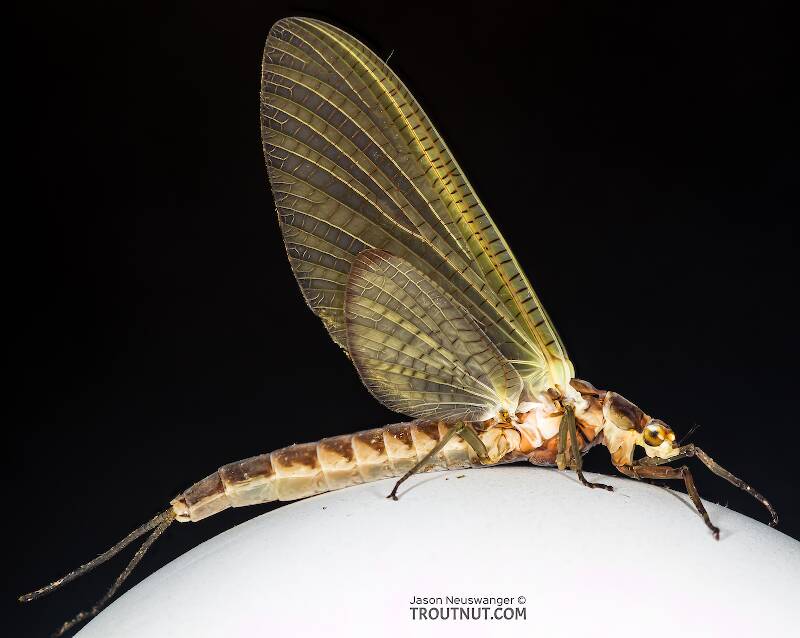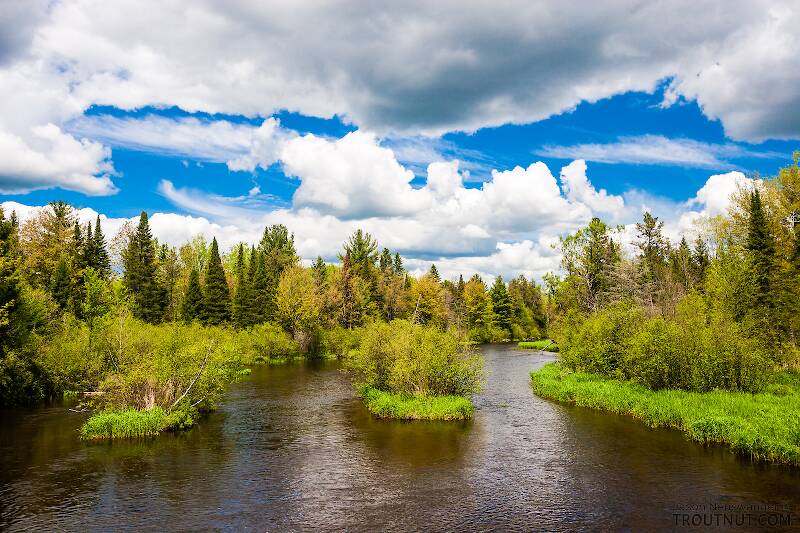
Hex Mayflies
Hexagenia limbata
The famous nocturnal Hex hatch of the Midwest (and a few other lucky locations) stirs to the surface mythically large brown trout that only touch streamers for the rest of the year.


Mayfly Species Leucrocuta thetis
Species Range
Physical description
Most physical descriptions on Troutnut are direct or slightly edited quotes from the original scientific sources describing or updating the species, although there may be errors in copying them to this website. Such descriptions aren't always definitive, because species often turn out to be more variable than the original describers observed. In some cases, only a single specimen was described! However, they are useful starting points.
Male Spinner
Wing length: 9 mm
A species of the maculipennis group (now a synonym of Leucrocuta maculipennis); very similar to H. juno (now a synonym of Leucrocuta juno), but with no dark marks on pleura.
Head pale yellowish white; a large smoky spot on each side of vertex between eye and lateral ocellus. Thorax yellowish; no dark longitudinal marks above leg bases, as in other species of this group. Legs pale yellowish; a short black streak apically on ventral margin of fore femur, not evident on other femora. Costa, subcosta and radius of fore wing pale amber; other longitudinal veins hyaline. Cross veins in anterior half of fore wing blackish; all others hyaline. Basal costal cross veins and a few in subcostal and third space slightly thickened; two cross veins at bulla in each of first three spaces; stigmatic cross veins finer and fainter than in H. juno, and more numerous ( 11 to 13 in thetis, 8 to 9 in juno). Abdomen pale whitish; segments 2 to 6 and basal portion of 7 semi-hyaline; apical segments opaque, light red-brown dorsally, somewhat paler ventrally. Posterior margins of tergites narrowly purplish black, most evident in dorsal portion. Tails whitish, unmarked. Genitalia much as in juno; penes with more distinct apical lobe, and longer spine on inner apical margin (see fig. 96).
Female very similar to male, aside from usual sex differences.
Nymph
Start a Discussion of Leucrocuta thetis
References
- Needham, James G., Jay R. Traver, and Yin-Chi Hsu. 1935. The Biology of Mayflies. Comstock Publishing Company, Inc.
Mayfly Species Leucrocuta thetis
Species Range
Resources
- NatureServe
- Integrated Taxonomic Information System
- Global Biodiversity Information Facility
- Described by Traver (1935)

